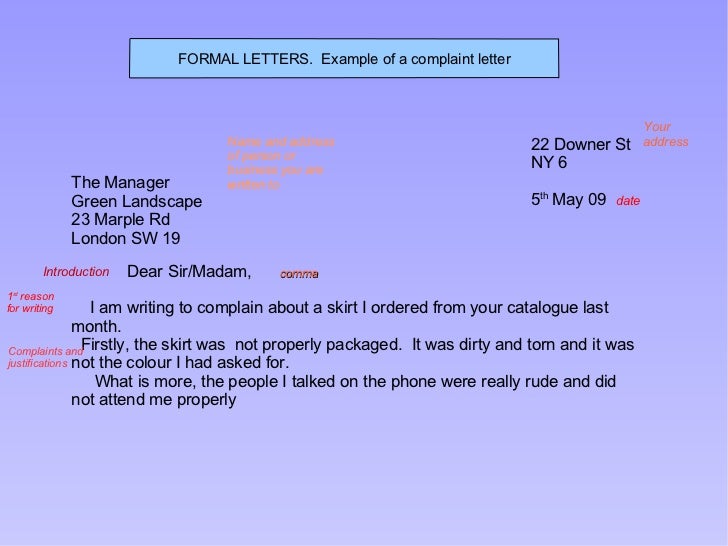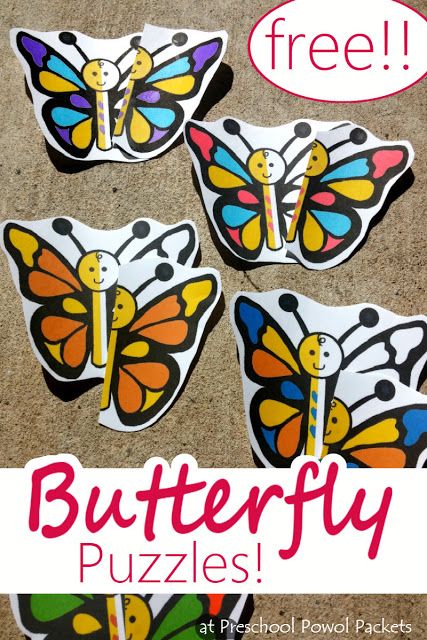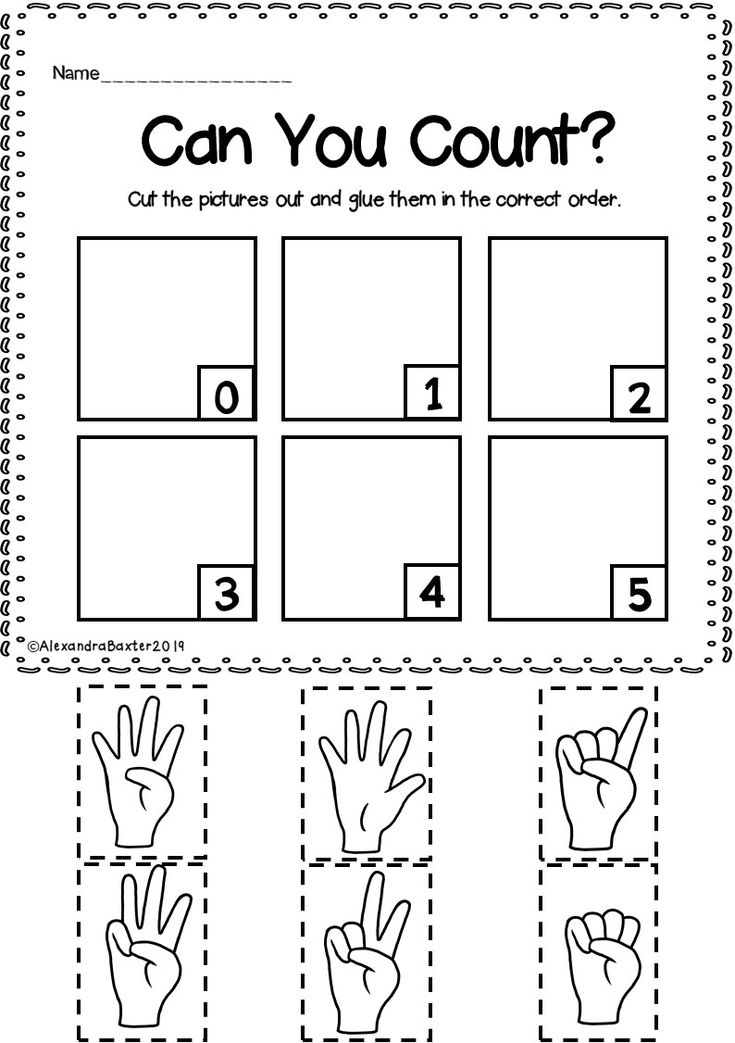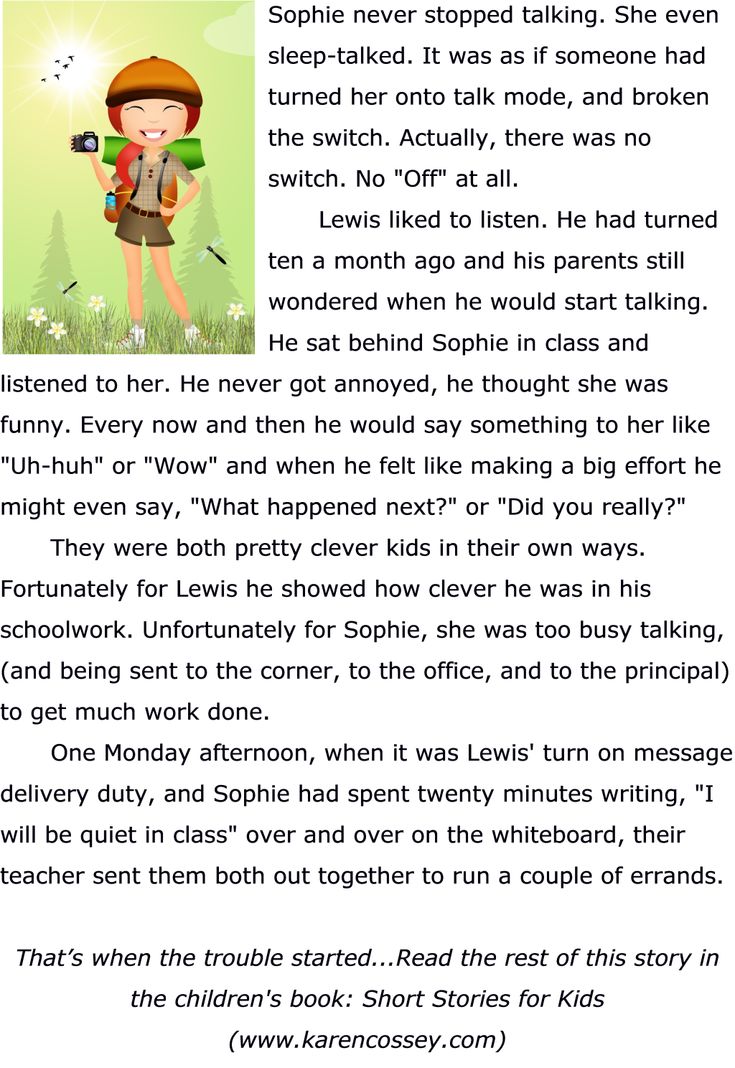Teaching colours to preschoolers
How to teach colours to toddlers and preschoolers
Colours may seem like an obvious part of our world, but that’s only because we’re used to them, as adults. For children, learning how to name and identify colours can be a bit of a challenge, as we’ll see below. The best time to teach colours is in early childhood. So, in this article, we’ll explain how to teach colours to toddlers and preschoolers.
Understand how a child’s mind works: colour doesn’t fit well with our natural way of thinking
Colour naming is largely based on culture and language – it is not a human ‘innate’ thing to identify shades of blue, and how they differ from green, for instance. Groups of people made that up, over time, because we like thinking in ‘categories’ – it’s easier to communicate and make sense of the world that way.
So, colour can be based on context we already have in our minds – much like we saw with “the dress” phenomenon that took the Internet by storm a few years back.
You’ll notice that children who are learning colours for the first time will have a hard time understanding that pink and red are different, or that navy blue is not black. First, they have to figure out what on earth you’re talking about!
That is very logical. In fact, you’ll notice children are logical, literal thinkers, by nature. It’s why they sometimes write some letters backwards, because in theory, some of them are the same thing (like p, q, b and d). It’s also why they follow grammar patterns that might make sense to a new language speaker, but are considered ‘wrong’ by native language speakers. We think they’re talking ‘cute,’ but they’re just following logic.
For example, if your child says something is “broked,” instead of “broken,” that would be logical. They’re trying to follow a grammar pattern. And English is not logical. If something can be “cracked” or “wrecked” why would it be “broken”?
When the whole world is brand new to a child, they will be absorbing things for the first time. It’s overwhelming, though very exciting – which is why the moon and the grass are so fascinating to them, as well as colours.
It’s overwhelming, though very exciting – which is why the moon and the grass are so fascinating to them, as well as colours.
To learn our cultural language norms and ‘categorical’ thinking, they’ll have to do some ‘unlearning’ (as the article linked-to above explains). They’ll have to figure out that their parents and teachers – who they seek approval from – want them to call blue, blue and green, green. It takes a bit of practice.
So, don’t worry so much if your kid doesn’t get their colours right for a while. It can take until around age 3 to master the more distinct ones. And, it can be around age 5 when they learn different shades of colours, based on naming systems we assign to them in our language groups.
See more on our blog:
- How to be patient with toddlers and preschool-age children
- How to recognize early vision problems in toddlers and preschoolers
Keep it simple: start by teaching primary colours, and colours with more distinctions
Since we’ve established that colour variations can be subjectively-based, it goes without saying that when teaching toddlers and preschoolers about colours, you’ll want to start with just the basics.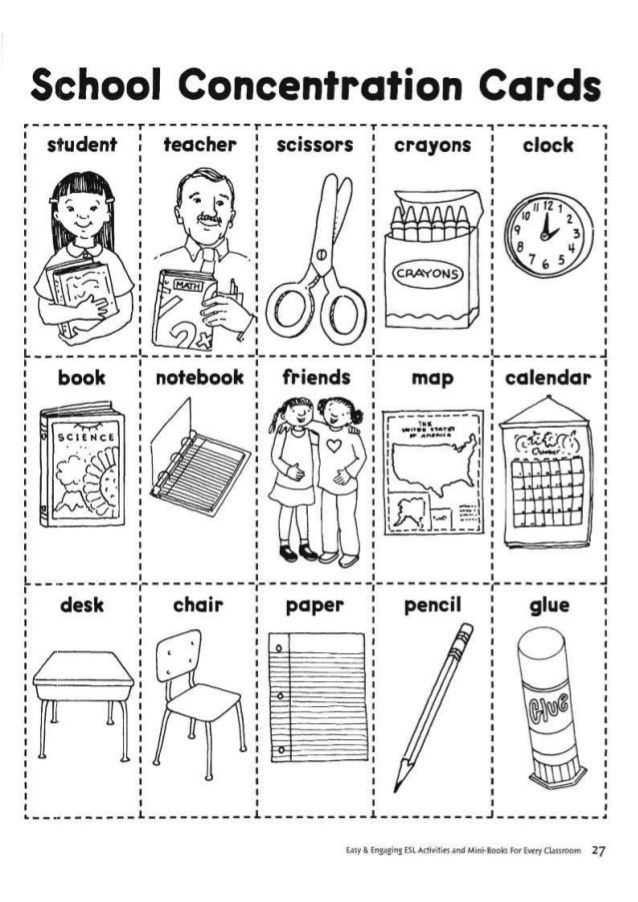 That is, teach primary colours to this age group first.
That is, teach primary colours to this age group first.
The primary colours are:
- Red
- Yellow
- Blue
Thereafter, include secondary colours, which are achieved when you mix the above colours (in painting, at least). They are:
- Orange
- Green
- Purple
Now, whether you start with secondary colours, or primary colours, it doesn’t matter much at this point. The idea is to teach a child how to identify the differences in ‘big’ categories of colour.
Thereafter, you can introduce pink, brown, black, grey, white and so on.
Focus on colour recognition, more than pronunciation, at first
Some young children will only be able to point to colours, and not say them. That is still excellent. It shows they can understand this abstract concept, and are learning to see colours in many contexts.
It should go without saying that some kids will mispronounce the name of colours. That is ok. At this point, for a young toddler, if you start over-emphasizing that, “bawn” is actually, “brown,” you may be bringing in confusion. They may not have the muscle practice to say things correctly at the moment, anyway. But they know what they mean.
They may not have the muscle practice to say things correctly at the moment, anyway. But they know what they mean.
It’s fine that you say these colours correctly (and you should). But if a one or two year old says “bawn” and is correctly identifying the colour brown, you can go ahead and give a congratulatory, “yes! That’s right! Good job!” Don’t say, “No, brooowwn,” and cause them to lose focus.
Pronunciation is not the lesson here. Colour recognition is. Once they can differentiate and label colours without thinking twice about it, you can correct their pronunciation, if necessary. But usually, kids will naturally pick up the right pronunciation of all words, in time.
Just enjoy those, “nanas” (bananas), “paasgettis” (spaghetti) and “naganets” (magnets) for now. “Bawn,” “boo” (blue), “pik” (pink), “lallow” (yellow), “wed” (red) and “oooen” (orange) are fine. They’re adorable!
See more on our blog:
- 5 Simple ways to teach preschoolers phonics basics
- 5 Easy ways to teach the alphabet to preschoolers
Use identical objects that come in different colours to teach colour differences
This works with balloons, flash cards, plastic cups, or anything you can find that is both easy and safe to hold for a child, and identical in form.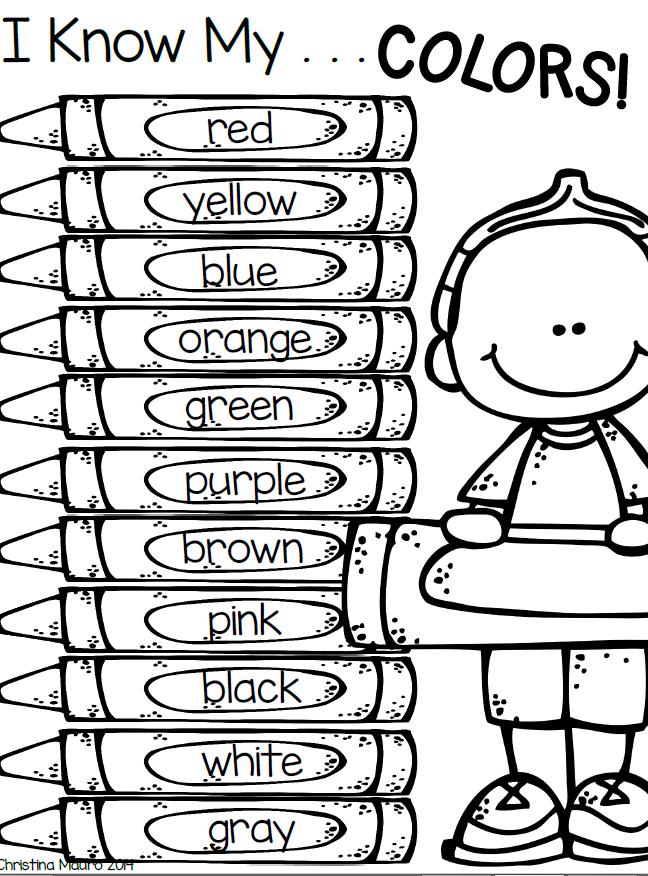
This helps a child notice the attribute that makes an object different. When you then emphasize over and over that ‘this cup is yellow,’ and ‘this cup is green,’ and so on, they’ll eventually pick up on those differences. They’ll also recognize that they are an important part of communication.
Later, as you go out of the house or daycare, you can point out ‘real life’ objects that are the same except for colour. For example: “I see a green car, can you see a red car?” or “look at the blue house, and the brown house.”
As the child learns to identify colour as an adjective, you can begin using it in language more. Start naming objects with this adjective, even if identical options are not present. For example, “I see an orange bucket and a yellow shovel! We can play in the grey sand and green grass.”
See more on our blog:
- 5 Fun, purpose-driven walks to go on with daycare kids or preschoolers
Play simple colour recognition games as a memorization challenge
Part of learning is making mistakes, and then trying again.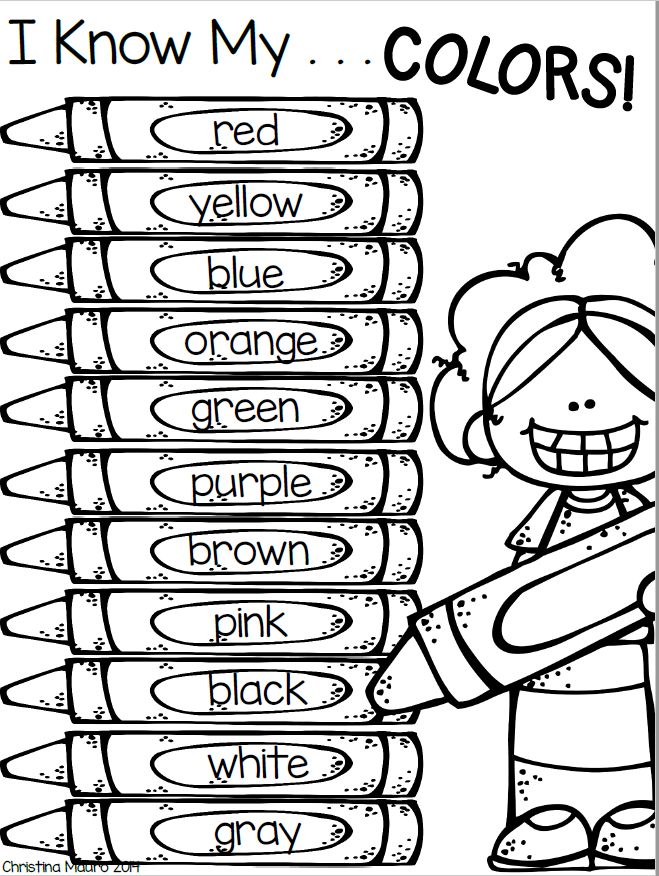 Since knowing colours is basically memorization, games with tests can help. They make memorization fun by challenging oneself to get better and better.
Since knowing colours is basically memorization, games with tests can help. They make memorization fun by challenging oneself to get better and better.
With little ones, of course, the challenge should be age-appropriate and simple. Don’t give them a stack of 20 crayons and ask them to name them all in one go. That’s too much.
Instead, start with just a few balloons, or balls or play cups. Ask them, “can you find the yellow one?” Or, “where is the red car?” And so on. When they get it right, they get a congratulations – a sign of approval from you, which acts as an emotional reward.
If they get it wrong, don’t show disappointment – it can be a downer on them. Just say, “oh, I think it’s actually, THIS one! This is red, is that what you meant?”
Play this type of game again and again. Use flashcards, books, or, as we mentioned above, play it when you’re out of the house in ‘real life,’ to identify the colours of objects.
You can also ask them what the colour of their food is, or ask them what colour their shirt is every day.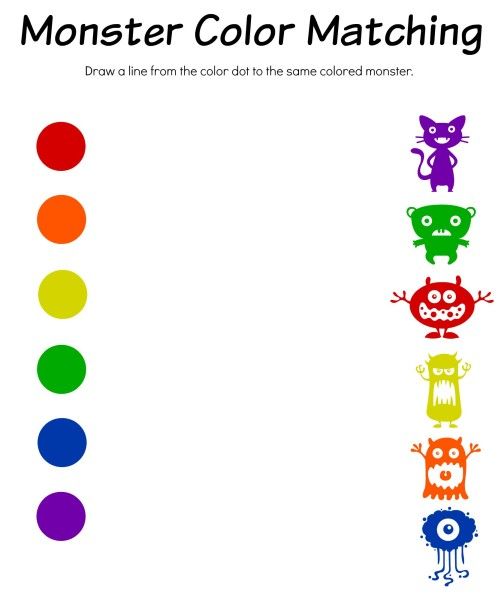 Ask about colour all the time, so they know it matters.
Ask about colour all the time, so they know it matters.
A perfect game to spot colours, when they are old enough (around preschool age), is “I spy.” Play, “I spy with my little eye, something that is… white!” The other person then has to look around at what you can both see, within the room’s vicinity, that is white. They keep guessing until they get it right. And then they ‘win.’ Next, it’s their turn to spy!
See more on our blog:
- 5 Imagination games to play with toddlers and young kids
Let children play and construct with colours, to learn colour applications and colour theory too
Children (and all humans), learn best when they are using knowledge, practically. That is, through manipulation of objects, and by integrating activities, speech and other acts around that learning experience. This engages the brain more. It also helps to form memories by association.
In short: this means participating in activities to purposely emphasize colours is an important part of teaching colours to preschoolers and toddlers. Use craft paper, crayons, paint mixing, and so on to do this.
Use craft paper, crayons, paint mixing, and so on to do this.
For tactile colour learning, use coloured sand or rice. Let them feel fabrics in different colours. Do face painting or hand-prints in colours. Stamp fun shapes with different coloured ink pads. Make glitter slime and play dough in their favourite colour. Bake a ‘rainbow cake’ or decorate cookies with coloured icing.
Now, through all of this, remind them of the colours they are using by naming them verbally, and asking them to do the same, as they are performing these activities.
To conclude: teaching colours to toddlers and preschoolers involves gradual learning
As we’ve noted above, getting toddlers and preschoolers to learn about colours is not an ‘automatic’ thing that they’ll pick up. It’s something that has to be taught, and re-emphasized, mainly because colour divisions are based on language and cultures, rather than a ‘clear cut’ science.
So, give kids a bit of patience with colour understanding and recognition.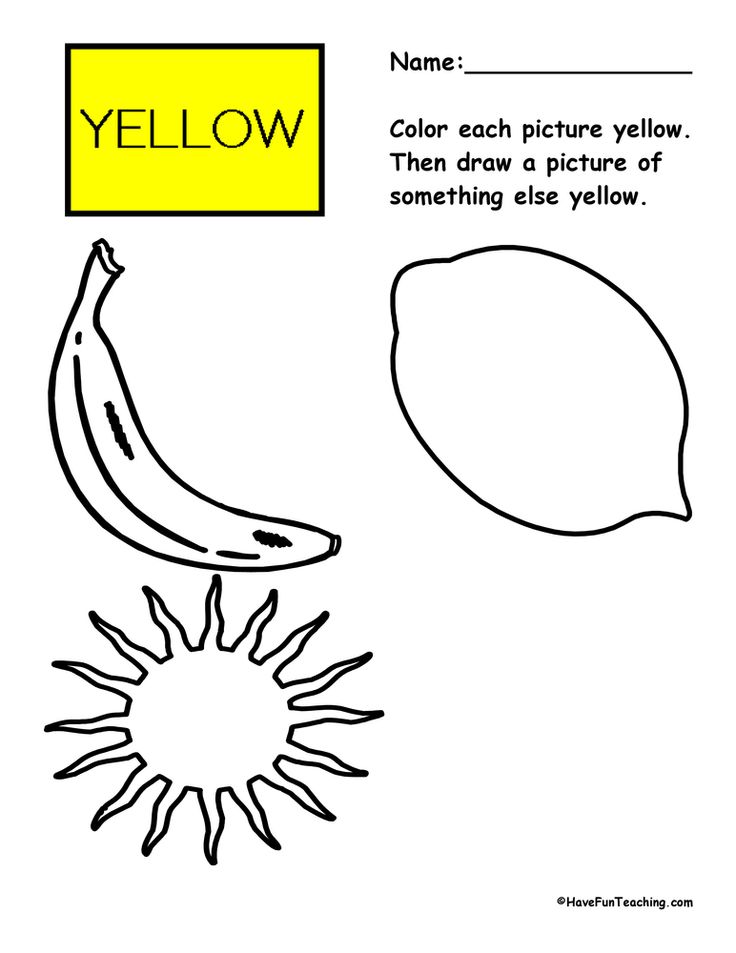 And, leave it to you to be the person responsible for repeating the names of colours, and noticing the opportunities to bring them up in conversation. The more these words and labels are reinforced, the more a child will learn that colour differentiations are important.
And, leave it to you to be the person responsible for repeating the names of colours, and noticing the opportunities to bring them up in conversation. The more these words and labels are reinforced, the more a child will learn that colour differentiations are important.
Of course, eventually, most kids ‘get it,’ even if it comes naturally. It’s not like we’re all colour blind unless we’re taught colours. It’s more that our categorizations of colour need to be ‘agreed upon,’ collectively and socially. Otherwise, the point at which orange, red and pink start and end can be hazy. So, for children, this is part of language learning – it is part of being able to call something what we all understand it to be.
Playing games makes colour learning fun, and applicable. It helps the brain retain this information. Not to mention, it gives you opportunities to spend time with your kids productively.
See related on our blog:
- 5 key elements of the Reggio Emilia approach to early childhood education
- How music affects young children and their learning
- How to identify and encourage multiple intelligences in early childhood
5 Activities for Teaching Colors to Preschoolers with Free Task Cards
The toddler and preschool years are the perfect time for teaching colors.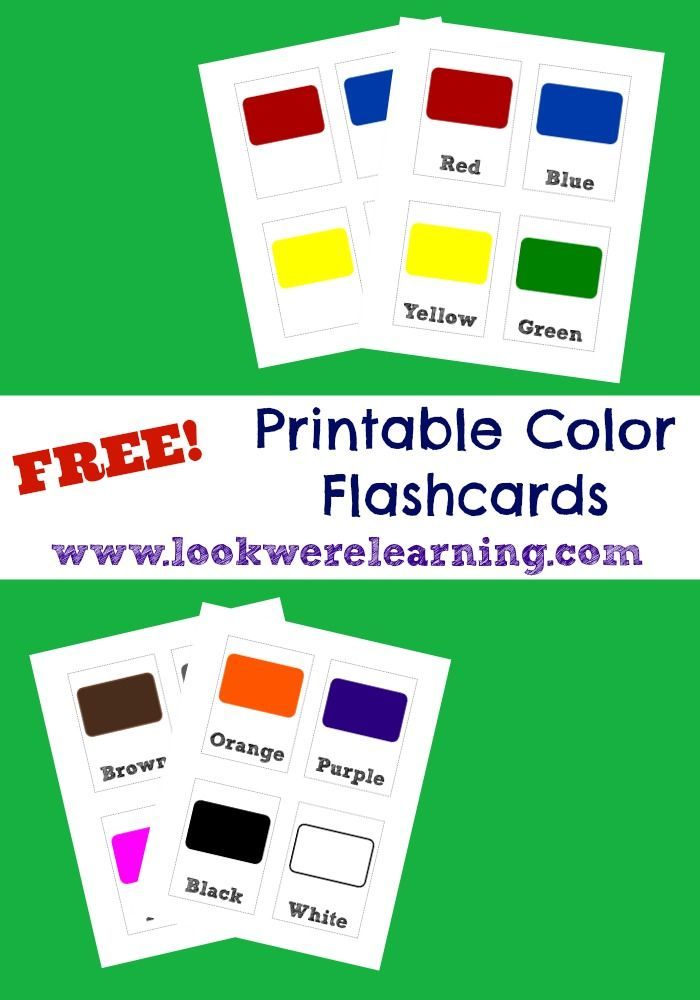 Starting as early at 15 months, toddlers start to develop interest and preferences in color and those preferences continue to develop into elementary school. So, why not build on this with these five activities for teaching colors to preschoolers and toddlers?
Starting as early at 15 months, toddlers start to develop interest and preferences in color and those preferences continue to develop into elementary school. So, why not build on this with these five activities for teaching colors to preschoolers and toddlers?
This post includes a free printable for teaching colors, so be sure to grab it from the end of the post.
I remember the exact moment my oldest learned his first color. We were sitting in the living room of our very tiny apartment, having just recently moved in about three weeks prior. He was still in that “dumping” phase where any kind of play always started off with dumping toys from the basket.
Well, he dumped out the bag of Mega Blocks, and watched as they scattered all over the gray carpet. Back then, picking up the bag of Mega Blocks was a quick task as we only had just a few sets of toys.
But we made good use of these blocks. My oldest picked up a red block and toddled over to be saying, “Boo, Mama, boo!” I gently corrected him, “No, this is red.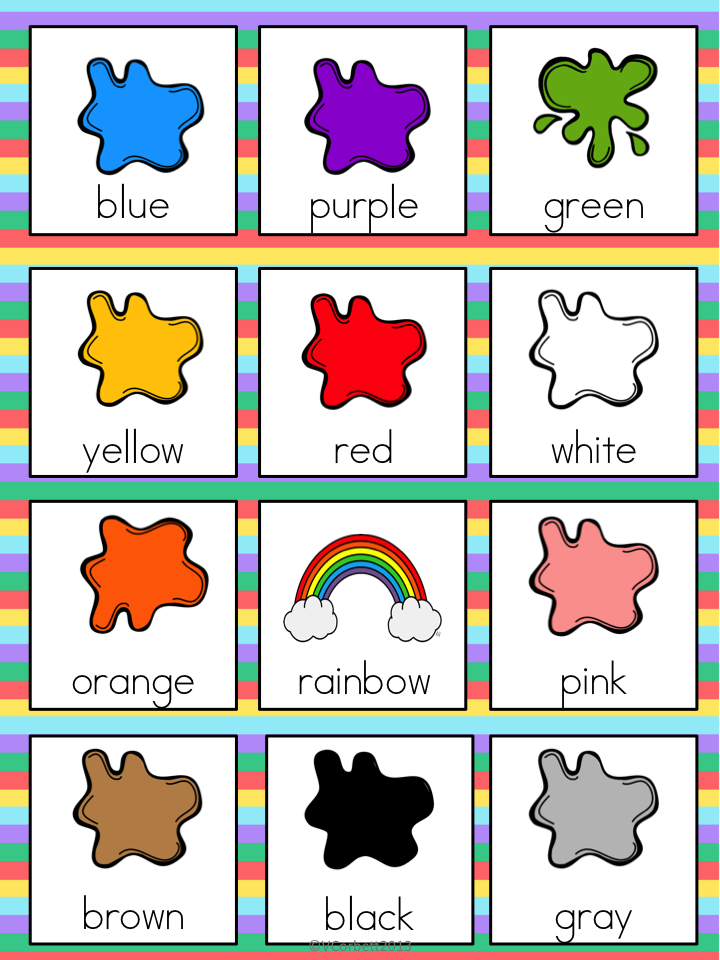 A red block,” and I picked up a second red block and showed him both.
A red block,” and I picked up a second red block and showed him both.
Then I showed him two blue blocks. “These blocks are blue,” I said. He then snatched both red blocks from my hands and run around the room with both, before tripping and falling, sending the two red blocks across the floor and mixing them up with the pile of other blocks.
That was ok, because then my little toddler just picked up a random block, brought it to me, held it about an inch from my face and said, “Boo bock, Mama. Boo!” And this time it was a blue block and my new mama heart sang. Because when you’ve been a mom for all of two minutes (ok, 16 months at that point), even the little milestones make you want to shout from the rooftops.
And that was the beginning of teaching colors in our house. Colors came easily to my oldest, by five kids (and about 100 preschoolers later) I can attest that learning colors doesn’t come easily or naturally to all children, which is why it’s so important to incorporate activities for teaching colors in your lesson plans.
There’s no right or wrong way to teach colors to preschoolers and toddlers. Basically, they just need lots of exposure to colors and lots of opportunities and activities to explore colors.
In this post I’m sharing five activities for teaching colors to preschoolers all while using a single set of printable task cards. You can grab the task cards from the end of this post.
Task Cards for Teaching Colors to Preschoolers
These task cards are a fun way for preschoolers and toddler to learn colors all while doing some fine motor work, too. Gotta’ love an activity (or five activities) that work on multiple skills at once. Be sure to read to the end of this post for all the other ways you can use these task cards to teach colors to your preschoolers.
Materials
- free color block printable
- jumbo tweezers (optional)
- 1 inch blocks
The Set-Up
Print the color block cards and cut apart. Laminate for added durability.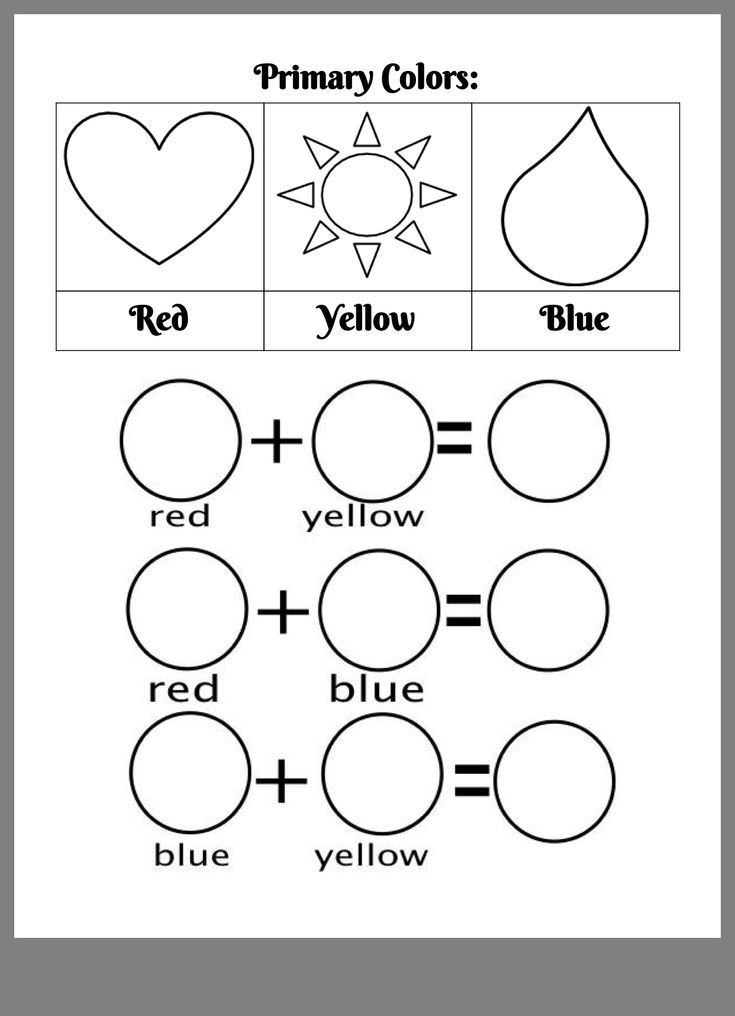
Place the task cards on a tray next to a bin of one inch blocks, along with some jumbo tweezers (if desired). Then invite your preschooler to join you in some fine motor color matching fun!
How to Use the Task Cards for Teaching Colors to Preschoolers
I like to start by asking my preschooler to name the colors on the selected task card before matching the colored blocks to the card.
If you’re preschooler doesn’t know all the colors, that’s ok! This is the first step in teaching colors to your preschooler. Point to each square and name the color, then ask your preschooler to name it with you. If the card has a second square of the same color and you have already named the color once, then point to the square and wait a few seconds to see if your preschooler remembers the name of that color.
Next, invite your preschooler to find the matching color blocks and place each block on the corresponding square on the card. Even without the jumbo tweezers, this is difficult fine motor work as it takes coordination to place the blocks in just the right place.
If you have a younger preschooler, this is definitely where you want to start. Without the tweezers. Using the tweezers with the fingertips, as they are designed, takes a lot of finger strength, and you don’t want your preschooler to get frustrated. But adding tweezers is certainly the next step in developing that fine motor work that will eventually turn into a mature pencil grasp.
You might have a young preschooler or toddler who is insistent on using the tweezers, even if they can’t handle the properly. They most likely will use a variation of the “death grip” and squeeze the tweezers with the whole palm of their hand. Believe it or not, this is great for strengthening hands, so let your toddler go ahead with it.
Now, let’s teach some more color words.
As your preschooler works at matching the colors, encourage him to say the color as he makes the matches. If he doesn’t, then say the color name for him. It might sound something like this,
I see you are matching the green block with the green square.
That’s a good match! What color are you matching?
Now, it is possible, and quite likely, that your toddler aged students may not be interested in making any color matches at all. This is ok too. Simply adding the blocks to the task cards, with or without the tweezers, is good fine motor and hand strengthening work.
In this case, you might say something like,
You’re holding a blue block. See? Blue. Can you say blue? Where does blue go?
I love these cards for teaching colors to preschoolers. It’s such a quick activity to set up!
More Ways to Teach Colors to Preschoolers Using these Task Cards
Here are a few other ideas for teaching colors to preschoolers using these exact same task cards, so you can get even more use about of them.
Oh, and don’t forget to grab your free printable at the end of this post!
- Use the task cards as a reference and have your preschooler make the same design on a mirror or table rather than directly on the card.
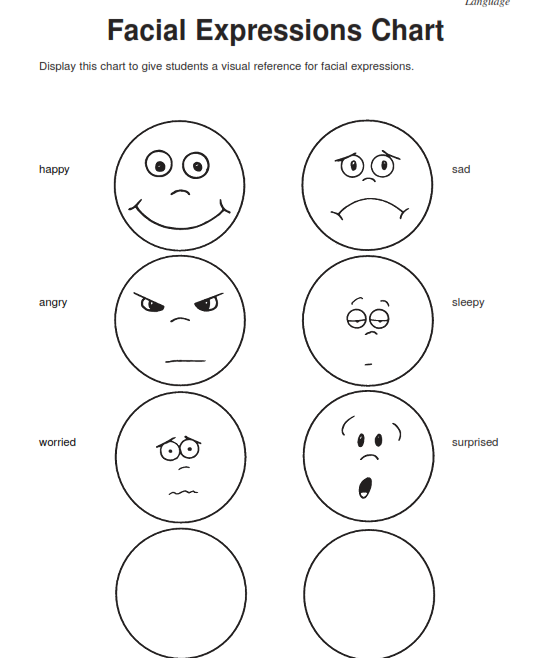
- Have your preschooler “build up” by stacking more than one block on each color. How tall can you go?
- Turn this into an activity that can be shared with parents by having your preschooler first snip little squares of colored paper and then glue them onto the cards.
- Be creative with the color manipulative. It doesn’t have to be blocks. You can use farm counters or any math counter, for that matter!
Looking for More Printables for Teaching Colors to Preschoolers?
Try some of these! They’re all free!
. . .
Grab Your Free Color Block Task Cards Here!
Think you need these for your preschool lesson plans? Grab your own copy by clicking the image below. It will be sent to your email.
Sarah Punkoney, MAT
I’m Sarah, an educator turned stay-at-home-mama of five! I’m the owner and creator of Stay At Home Educator, a website about intentional teaching and purposeful learning in the early childhood years. I’ve taught a range of levels, from preschool to college and a little bit of everything in between.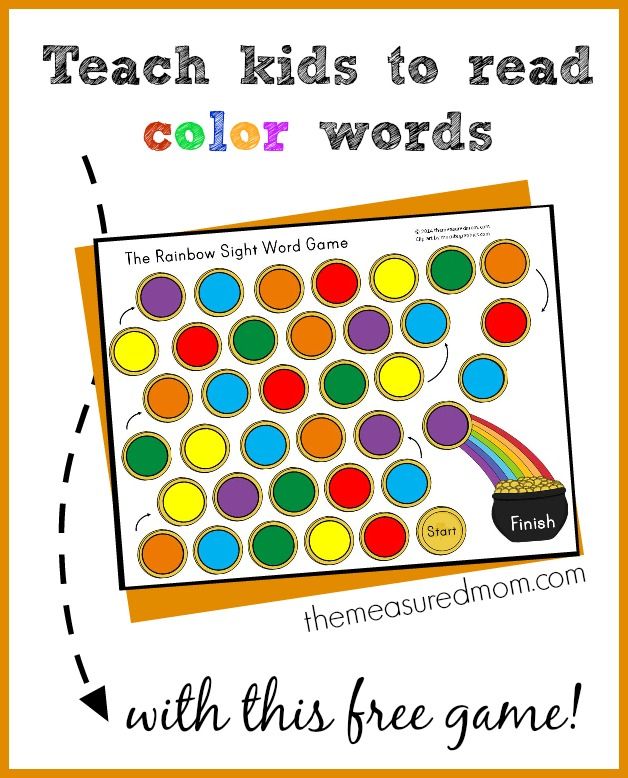 Right now my focus is teaching my children and running a preschool from my home. Credentials include: Bachelors in Art, Masters in Curriculum and Instruction.
Right now my focus is teaching my children and running a preschool from my home. Credentials include: Bachelors in Art, Masters in Curriculum and Instruction.
stayathomeeducator.com/
Learning colors: how to teach a child to distinguish colors and shades
It is generally accepted that by the age of three a child should learn to distinguish between primary colors. This skill is an important part of sensory development, it gives the child the opportunity to see the world in a new way. Often, if the baby does not know or confuse colors, parents have concerns about the pace of development of the child. Do I need to worry if the study of colors is not easy for a child? How to teach a child to distinguish colors? You will find answers to these questions in our article.
At what age does a child begin to see colors?
Studies have shown that children begin to perceive colors by 2-3 months. The first colors a child sees are yellow, orange, red, green.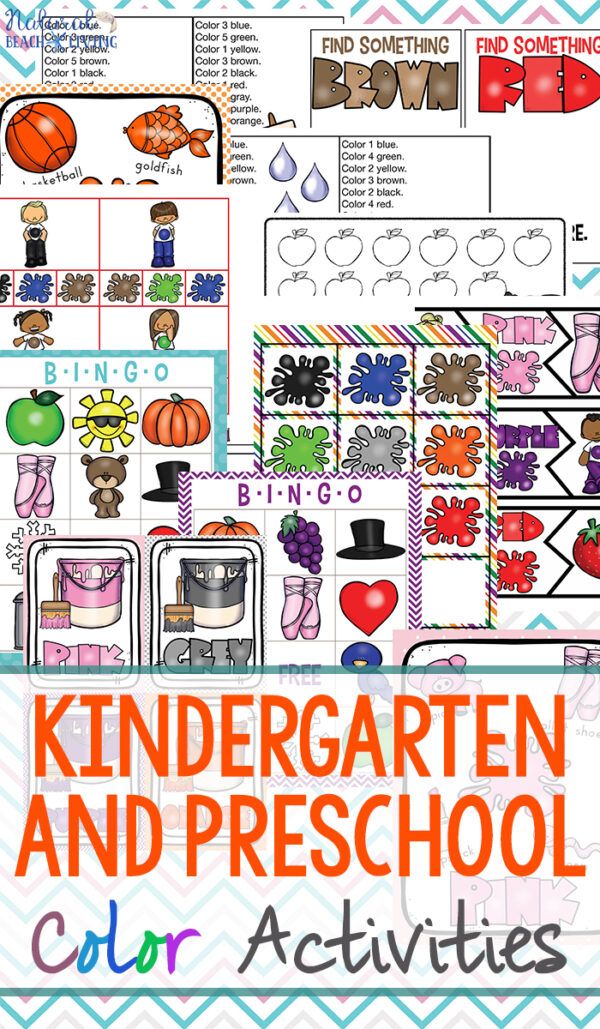 At this age, babies can already react differently to their toys of different colors (for example, a red rattle can please a child more than a blue one), look at bright pictures with enthusiasm. The baby's world quickly acquires colors, but if we talk about the ability to consciously find an object of the right color, then usually it appears in children at the age of one and a half. It is at this age that it is optimal to start learning colors in a playful way. You can voice the names of flowers to a child for up to a year, this will only benefit him. But do not demand too much from the baby, remember that his brain is actively developing, and as soon as the time comes, you will certainly see the results.
At this age, babies can already react differently to their toys of different colors (for example, a red rattle can please a child more than a blue one), look at bright pictures with enthusiasm. The baby's world quickly acquires colors, but if we talk about the ability to consciously find an object of the right color, then usually it appears in children at the age of one and a half. It is at this age that it is optimal to start learning colors in a playful way. You can voice the names of flowers to a child for up to a year, this will only benefit him. But do not demand too much from the baby, remember that his brain is actively developing, and as soon as the time comes, you will certainly see the results.
To see if your child is ready to learn colors by playing with building blocks, ask your child to point to a part that is the same color as yours. If the baby can find objects of the same color, then he is quite ready to memorize the names of colors.
Learning colors in everyday life
Children get most of their knowledge about the world in everyday life: communicating with adults and peers, observing nature, playing.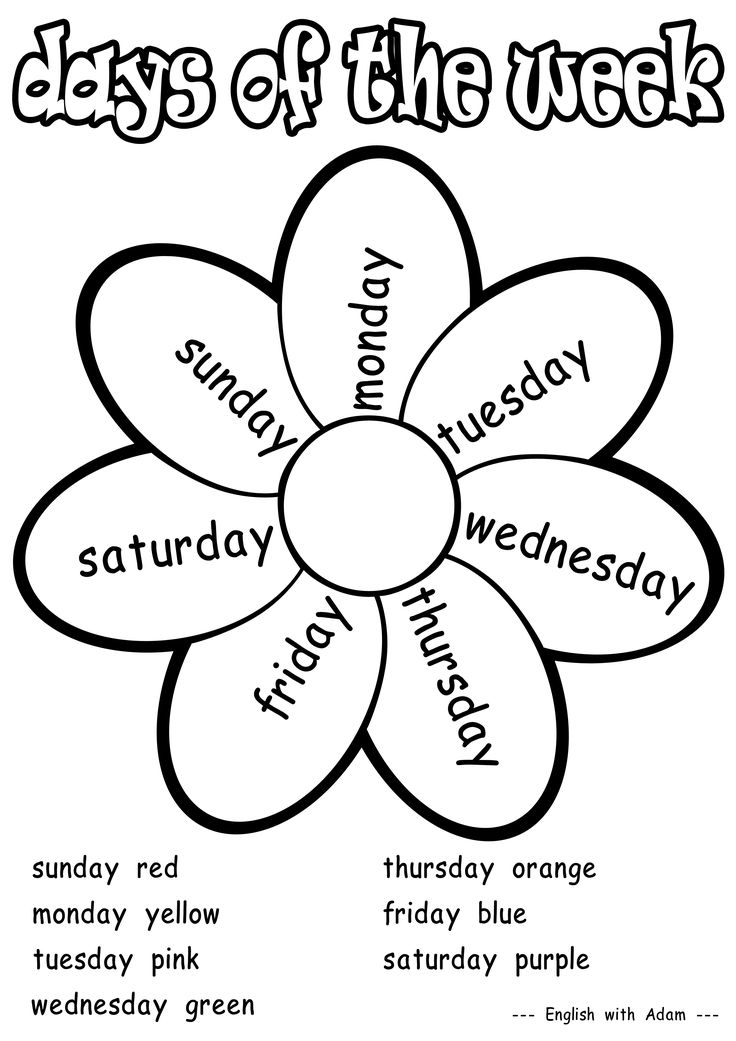 The study of flowers is no exception. Sometimes a child does not need to do special exercises to learn to recognize colors. For this, it is enough that he hears the name of the color and associates it with a specific thing. During daily activities, voice for the child what color the objects are around. Whether you are drawing, playing with blocks, looking at cars in the yard, reading, swimming, eating, dressing - in each of these situations, you can gently teach your child to distinguish colors.
The study of flowers is no exception. Sometimes a child does not need to do special exercises to learn to recognize colors. For this, it is enough that he hears the name of the color and associates it with a specific thing. During daily activities, voice for the child what color the objects are around. Whether you are drawing, playing with blocks, looking at cars in the yard, reading, swimming, eating, dressing - in each of these situations, you can gently teach your child to distinguish colors.
It is important that the study of colors does not turn into torture. You should not constantly test the child's knowledge by asking him which color is which. Soon the baby may just start to ignore you. “Let's paint the sun yellow!”, “What a delicious green cucumber!”, “Oh, where did the blue cube go? Here he is!" are examples of how you can gently help your child remember colors.
Games for learning colors and their shades
In order to get your baby interested in learning colors or to reinforce existing knowledge, you can invite your child to play special “color” games.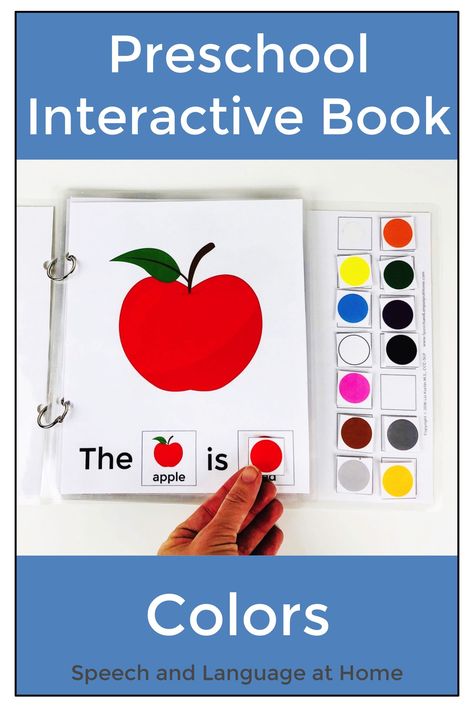
Color Sorting
Sorting games are designed to help children learn to group objects by color. Any materials at hand can be items for sorting: toys, covers, designer parts, cubes, buttons, cereals, pencils, etc. You can organize the game in various ways:
You can come up with as many options for sorting by color, it all depends on your imagination. So that the child does not lose interest in the task, connect the plot of the game with his favorite characters, toys (for example, a cat will eat from a yellow bowl, and a baby elephant from a red one, etc.).
Match a Pair
Help your child learn colors with the Match a Pair series. Ask your child to find a petal for a bug, a pot for a flower, a roof for a house, etc. You can present the baby with a deliberately wrong option and ask to correct the mistakes.
Pick up a patch
Show the child the picture with the missing details.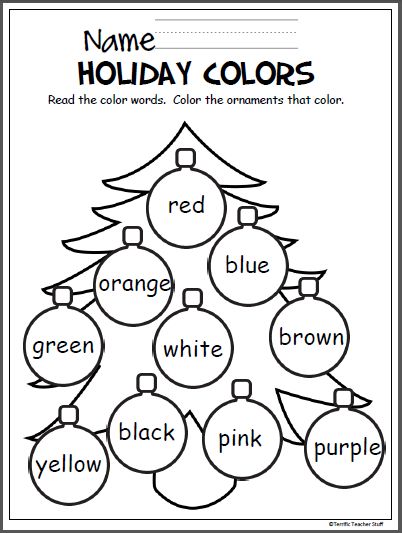 Ask him to fill in the gaps (this can be done with plasticine, pom-poms, caps, cards, etc.).
Ask him to fill in the gaps (this can be done with plasticine, pom-poms, caps, cards, etc.).
Color Lotto
At the age of about one year, children begin to be interested in various lottos. In the color lotto, the task is to collect pictures of the same color on the card.
Colored Sensory Boxes
Create a sensory box for your baby where everything is the same color. During the game, the child will be able not only to remember the color that he sees, but also to develop fine motor skills, tactile sensitivity, thinking, and imagination.
Color days
This is one of the most interesting and popular ways to teach your child to distinguish colors. Its essence is that during the day (or several days) you draw the child's attention to objects of a certain color. For example, on a yellow day, you can dress in yellow clothes, play with yellow toys, draw a yellow chicken. Surrounded by one color, the baby will easily remember it.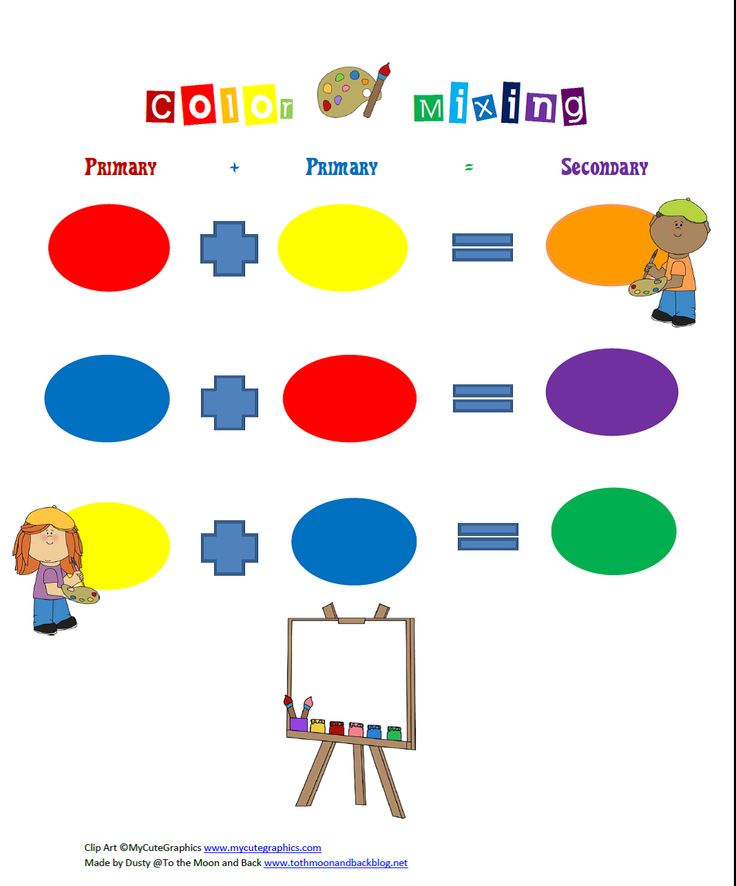
Cards for learning colors
You can learn colors with your child using cards. With the help of Doman's "Colors" cards, you can introduce your baby not only to the main colors, but also to different shades. It is important not to overload the child with unnecessary information about the names of 10 shades of green or red. Learn only those shades whose names you can use in the game and life.
Board games for learning colors
Board games are a great way to learn about colors and consolidate knowledge about them. Currently, the stores offer a wide range of similar games for every taste and budget. Choose a game that suits your child.
Educational cartoons
There are many educational cartoons on the Internet that will help your child memorize colors quickly. Here is one of them:
Educational books
If your little one loves to listen to stories and look at pictures, this is the way for you.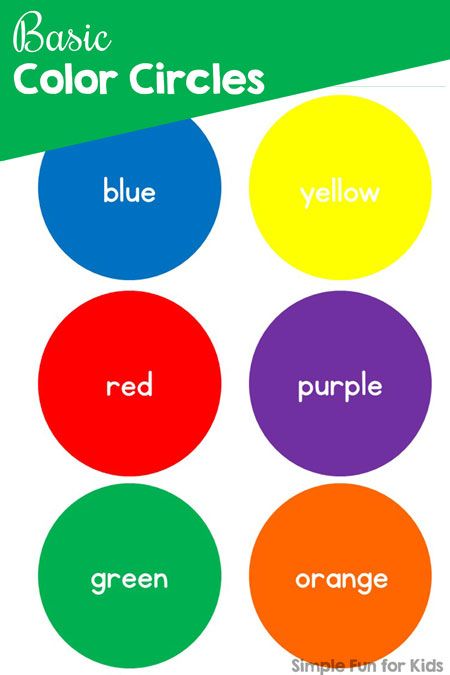 We all remember the wonderful story of V.G. Suteev "Rooster and paints", by S.Ya. Marshak has a whole “Colorful book”. You can also find many educational books that will become your faithful assistants.
We all remember the wonderful story of V.G. Suteev "Rooster and paints", by S.Ya. Marshak has a whole “Colorful book”. You can also find many educational books that will become your faithful assistants.
Conclusions
We have listed for you different color learning games. In order for a child to master the concept of color well, it is worth adhering to a number of principles: do not rush the baby, provide a variety of material for games, discuss what you see.
Conclusion
You can start studying colors from a very early age, the main thing is that it is interesting for the child. It is impossible to specify clear age limits when a child should learn primary colors. This process, like all development, is individual for each baby. The Sozvezdie Development Center has created a Montessori environment for kids, aimed at the comprehensive development of the child. In the "Together with Mom" classes, children in a playful way get acquainted with the concepts of color, shape and size, do thematic creative work.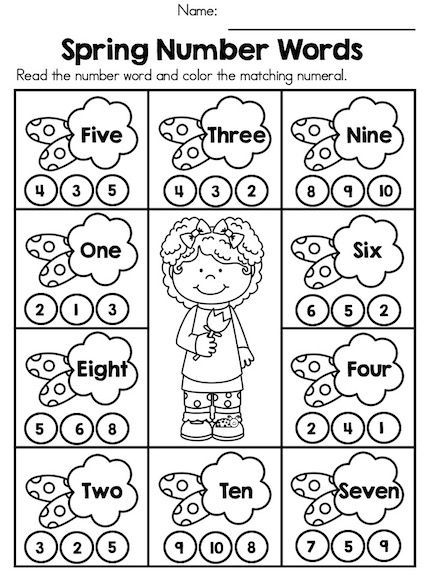 You can learn from our teachers how to interest a child in an activity and how to properly present him with cognitive information. Develop with us!
You can learn from our teachers how to interest a child in an activity and how to properly present him with cognitive information. Develop with us!
Prepared by a Montessori teacher
Sokolova Oksana
How do we learn colors with preschool children?
The appearance of a child in a family imposes many new tasks on parents: to instill the first counting skills, to develop the language. And then - teach the baby colors.
In the study of the surrounding world, a small person gets acquainted with the properties of objects, their shapes, size and, of course, color.
Is it necessary to specifically teach the child to distinguish colors or will it happen by itself in the process of growth, when the baby himself will gain knowledge and experience?
And why teach him to recognize colors if in a year, when he turns, for example, three years old, it will be much faster and easier to do?
And if we decide to teach the child colors, how to do it?
Contents
- A bit of physiology
- First concepts
- Jars of paint for drawing and coloring
- Draw attention to everything around
- Passion for drawing and plasticine crafts
- 0003
The yellow color holds the championship.
 It is his child who perceives in the first place. A little later, he perceives red and orange.
It is his child who perceives in the first place. A little later, he perceives red and orange. After a while, it can distinguish between blue and green, and by the 6th month - purple. So, the presence of yellow, red and orange colors in baby rattles is not accidental. This is directly related to the peculiarities of color perception in children.
Speaking about teaching colors, we must develop the child's ability to consciously distinguish one or another color, to master the grouping of objects by color, to learn how to choose the necessary color and shades. All these skills do not develop immediately, and, of course, due attention should be paid to their formation.
Color, shape and size are for children the basis of samples on which knowledge about specific objects and phenomena is based. And the sooner these indicators are formed, the more useful information the child will be able to accept and assimilate, and the better it will develop in general.
First concepts
For a small person who has just made his first discoveries in a large and colorful world, color is not something separately visible and distinguishable.
 It is closely related to specific objects and objects, which often have a certain color, so color for a child is not an abstract concept, but an associative one.
It is closely related to specific objects and objects, which often have a certain color, so color for a child is not an abstract concept, but an associative one. As a rule, we say to the child: “Red tomato, green grass.”
But a tomato can be green, and red, and pink. And the grass isn't always green. It is usually green, and in autumn it is predominantly yellow.
So, it is necessary to establish such color models at an early age and not confuse the child.
It would be good if, showing him a separate object, say: “This is a tomato. He is red".
Do you feel the difference?
Name not a phrase, which is perceived as one name for an object, but speak in sentences.
Name the item first. And the second sentence is to name its color.
This also applies to toys. When giving a baby a ball, we usually say: “Here is a blue ball.” For a child, this sounds like one word, like the name of an object.
But now we already know how to correctly construct a sentence: “This is a ball.
 He is blue. And this is a cube. He's blue too." So gradually, with experience, the child will learn to distinguish the object from its quality.
He is blue. And this is a cube. He's blue too." So gradually, with experience, the child will learn to distinguish the object from its quality. He will make an important discovery for himself, realizing that red can be a tomato, a car and a bench over there on the street.
And if we, as often as possible, pay attention to the color properties of objects, the child will make this discovery much faster.
When pointing out a particular color to a child, one should not limit oneself only to the basic ones: blue, red, green, yellow. And you do not need to learn colors separately: first, to remember red, and then green. Speak colors correctly - don't call gray blue or pink or crimson red.
Children perfectly distinguish nuances, no worse than we do. And they don’t understand at all why mom calls completely different colors with the same word. At the beginning of training, to avoid such confusion, try to choose those toys or objects whose color can be called red or green unambiguously.

Cans of paint for drawing and coloring
Paint jars and felt-tip pens will help you when teaching your child about colors. Draw with your child, constantly pronounce each specific color that you take with a brush: “Which jar did we take with you from? From yellow.
Let's draw a yellow sun from a yellow jar. And what color will we draw the chicken? Also yellow! Yellow sun and yellow chicken!”
Explain the child's actions: “You took from the green jar. Bravo, I drew green grass from it!
Children are happy to draw with a felt-tip pen. It is advisable to choose special felt-tip pens with colored caps for the baby.
When you have finished drawing, ask your child to help you close each marker with the correct cap.
Don't forget to name the colors! Sometimes you can get confused and put the lid on another felt-tip pen to please the child, who will gladly volunteer to correct the mistake.
Thanks to this simple confusion, children from the age of one and a half can successfully cope with the request to find not only the primary colors, but also orange, purple, brown, pink, gray .
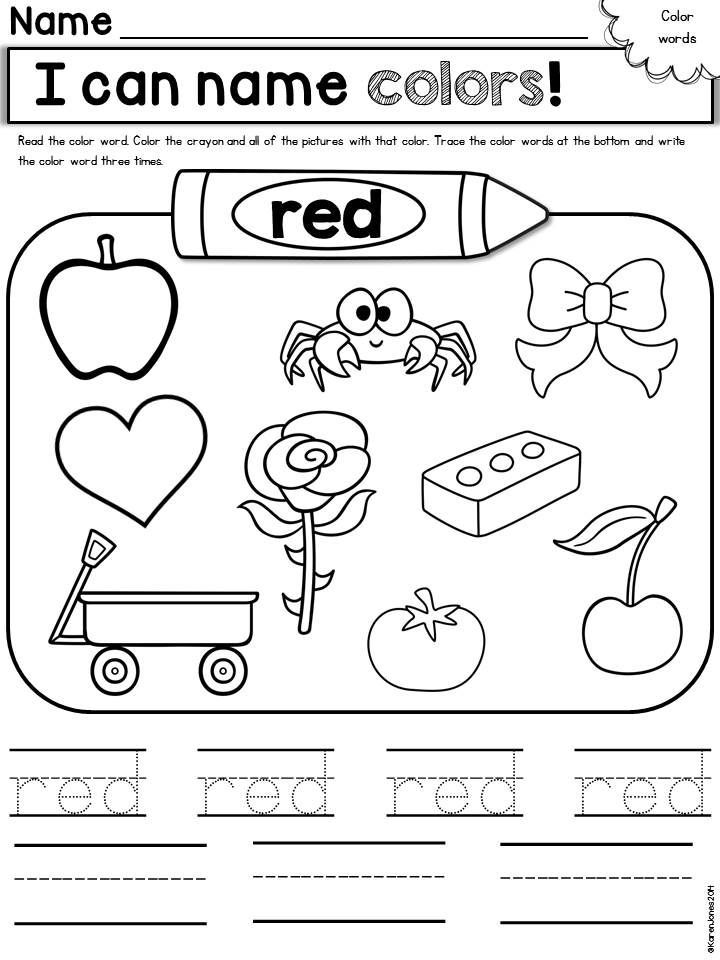 ...
... In general, we have great opportunities for drawing with children. They should be used variably to teach color.
For example, we draw colorful balloons and ask the child to draw dots on them in the same color. And of course, we will name the colors. Or we draw several different houses. “Look, what is missing in our houses? Of course windows!
Well, let's paint the windows the same color as the houses. Thus, you can draw rays of the sun, heavy rain from different colors of clouds, etc.
Draw three identical flowers of different colors (three red, three blue, three pink, etc.) on a sheet and ask the child to collect the same flowers in bouquets, connect plants of the same color using a line.
In a word, you can come up with a lot of similar problems. And, of course, do not forget to introduce the child to the colors of the rainbow. It will be fun for a child to draw a rainbow - it's so interesting!
As a rule, pronouncing a color comes a little later than distinguishing it.
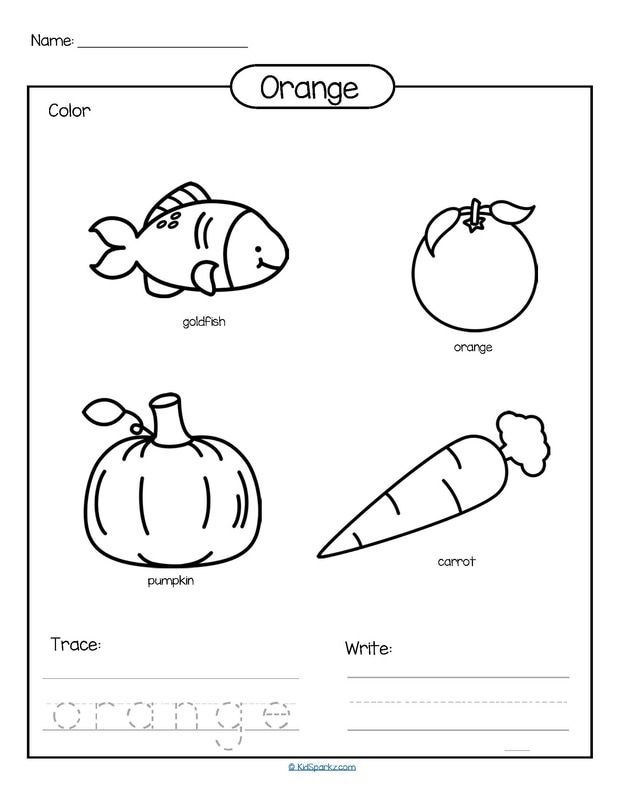 Often mothers, complaining that their child does not know colors, confuse two different things: knowledge and skill are different processes. As a rule, from the second year, most children already know the primary colors.
Often mothers, complaining that their child does not know colors, confuse two different things: knowledge and skill are different processes. As a rule, from the second year, most children already know the primary colors. They easily find blue cubes in a pile, but not all children will name these colors. This shouldn't bother you. Just keep playing games, colors, draw, pay attention to objects of different colors while walking, and often say the names of different colors and shades. Very soon the child will know and be able to name all this.
Then you can move on to images of intermediate tones. For a more precise definition of color, use the adjectives "light" and "dark" in combination with any tone: light red, dark blue, etc.
If a child stubbornly refuses to choose colors, you can offer him to play colorful associations. Of course, many children themselves come up with the names of colors. So, pink becomes Barbie's house, brown becomes Winnie's house, and light blue, let's say, like "my favorite mug.
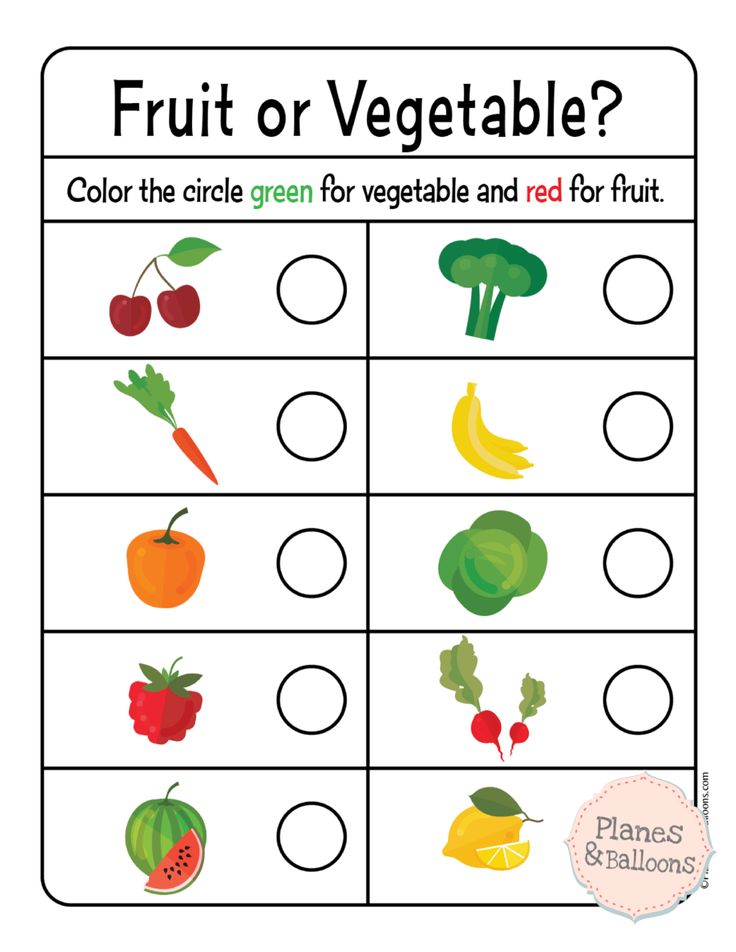 "
" Here is another simple trick and a useful game for teaching color - name all objects with a certain color while walking. You can play "color days".
For example, today is your white day. Wearing something white and looking in the park, around us is something white. And even for dinner at home there should be something white, for example. cheese. And tomorrow can be called red or green. So even boring days can become colorful.
You just need to really want it!
What methods will help facilitate the assimilation of this one of the first sciences for a little man?
Draw attention to everything around you
Learning in the form of a game accelerates not only the assimilation of numbers and words, but also the memorization of colors. To begin with, it is useful to voice the colors of things and their individual elements, collecting the child on the street.
Moreover, it is important not to limit the palette to seven colors of the rainbow: it is better to complete clothes from 2-3 different shades of colors - burgundy, lilac, crimson.
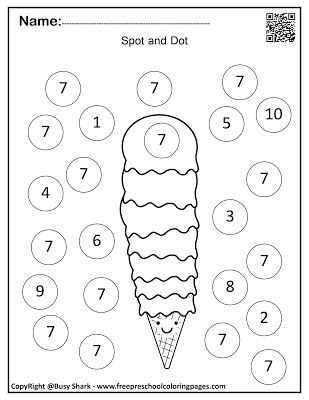
And on the street, you can pronounce the colors of all objects in your field of vision: grass is green, wood is brown. The more time to devote to such communication, the faster the child himself will begin to talk about the colors of objects that will attract her attention.
Passion for drawing and plasticine crafts
Drawing and making figurines from plasticine is very effective for teaching a child colors: by pronouncing the color that is applied to paper, you can significantly speed up the result.
Here it is important, at the very first attempts to voice colors, to fix the acquired knowledge of colors: to invite the child to draw objects of a given color, for example, a blue sky with white clouds and a yellow sun.
Plasticine is a great way to teach a child to remember, distinguish and choose colors: when sculpting, you should choose separate colors for different elements of the figure, you should not mix all the colors into one, but on the contrary, you need to highlight them.
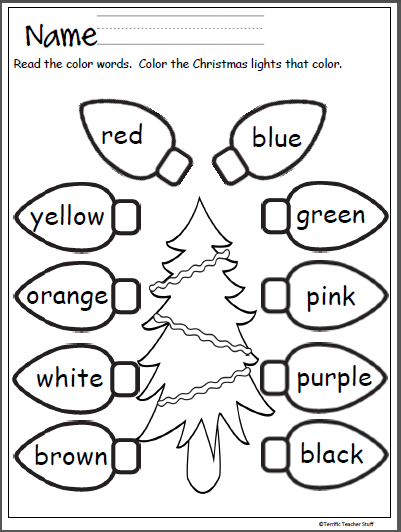
Brightly colored toys
Bright, colorful first rattles and toys with sound inserts introduce baby to sounds and colors at the same time.
A little later, variations of educational kits, cubes, balls of different colors appear in the house, which forms an understanding of the combination of colors: you need to attach a cube of the same color to the red hole.
Gradually, it is useful to make this task more difficult - if the task is to combine parts from different colors: the yellow triangle and the blue cube must be placed in the corresponding holes of the green area - this is how the child develops motor skills, logic, different shapes and colors are remembered.
Analogy - associations
When playing balls with a child, it should be pointed out that the ball in mom's hands is blue, like dad's shirt, and next to it lies a yellow ball - like his favorite toy. Going for a walk, in the course of discussing with the baby, for example, the colors of cars, you can draw analogies with nature around: a green car, like leaves on a tree.

Such associative examples will greatly facilitate the process of memorization and help develop the projection of the acquired knowledge on other subjects.
Instilling in a child the first important knowledge, adults need constant attention, patience, efforts, a positive mood and the ability to interest in the learning process: elements of the game must be used in all possible daily activities and turn every lesson into educational entertainment!
Rainbow colors for children
Rainbow is an incredibly beautiful natural phenomenon. It looks like a multi-colored arc made up of colors (from the outer edge: red, orange, yellow, green, blue, indigo, violet).
These are the seven colors used in the rainbow in Russian culture. Below are illustrative pictures for teaching a child the main colors.
Colors of the rainbow in order
The order of the flowers is easy to remember with the help of the mnemonic phrase: "Every hunter wants to know where the pheasant sits.
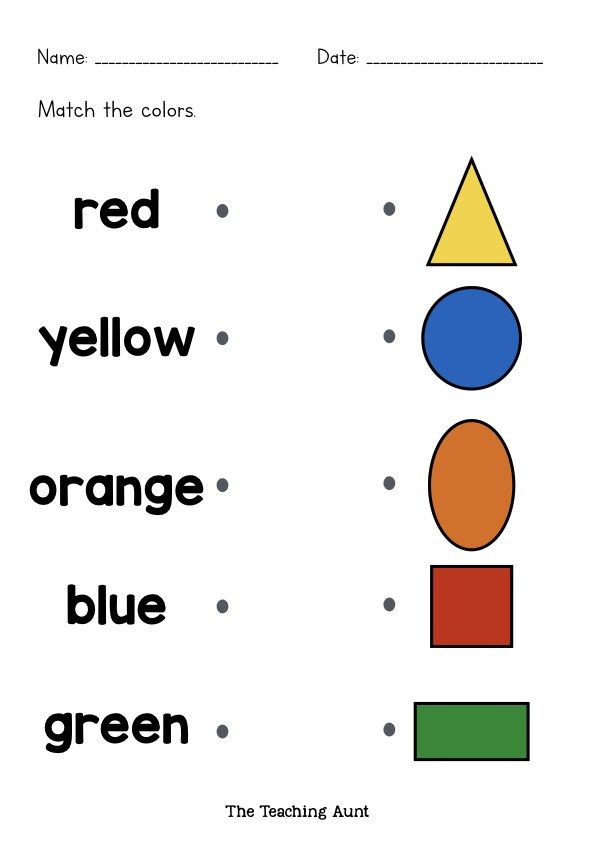 " There are other options: “How once Jacques the city bell ringer broke a lantern.
" There are other options: “How once Jacques the city bell ringer broke a lantern. (How Once Jean Zvonar Crushed a Lantern with His Head)" and "A cat sewed blue jerseys for a donkey, a giraffe, a hare."
In these sentences, each first letter in a word denotes the initial letter of a color.
Poem about colors
I'm in my grandmother's garden
I'll find a lot of red:
This is a red raspberry,
Nearby is a red viburnum,
And ripened by the fence
Two handsome tomatoes.Orange apricot
Growing on the tree.
Grew up, matured,
And I ate it.These are yellow chickens.
Look, they're running somewhere.
It can be seen that the mother is in the yard.
The worm found in the grass.Here are green frogs
And green grass.
In the swamp near the edge of the forest
A friendly “qua-qua!” is heard.In summer the sky above you
Blue-blue!
Bells under it
Let's draw it in blue.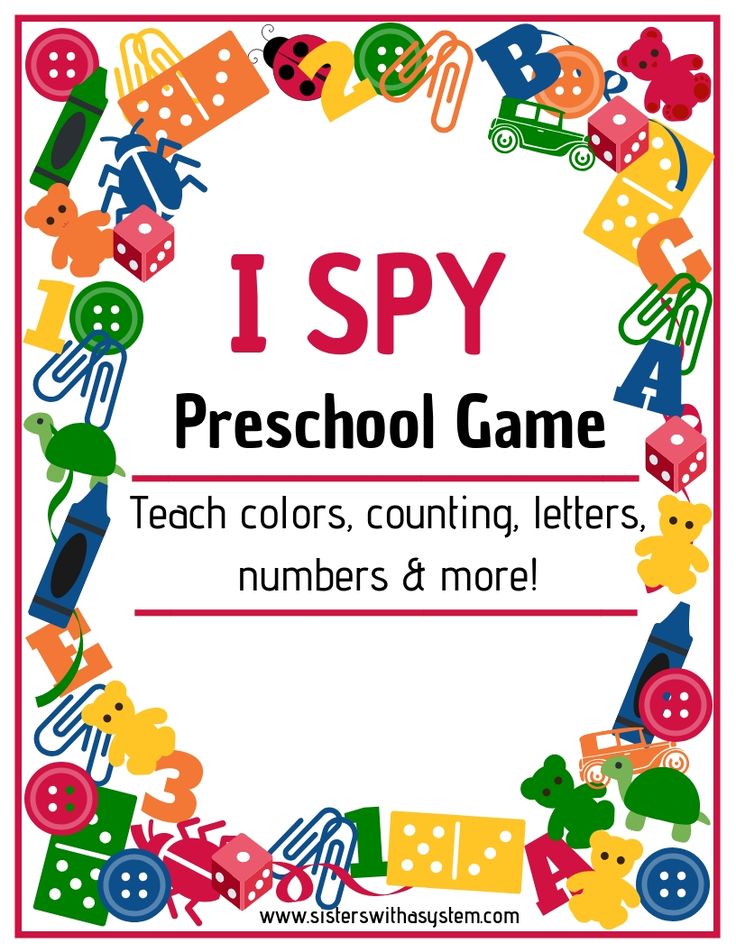
Blue balloon over the track
Flies into the clouds.
Wave your hand to him:
- Goodbye! Bye!Eggplant lies in the garden -
Purple barrel.
And inside a sweet plum
A worm settled.Color Methods
Of course, there are a wide variety of methods for studying color, and some of them are simply absurd, others are ineffective. So that you do not worry, we have selected for you only the best ones that will help you quickly teach your child the main colors.
Of course, you will need some equipment. We will not rely on modern technologies and say that everything can be shown on a computer monitor, we love the old, "old-fashioned", proven methods.
Therefore, you will need:
- Balloons in different colors
- Felt pens and markers
- Colored cardboard
- Paints
- Paper
- Pencils
- Mosaics, cubes, pyramids
All this may be useful to you as a handy tool for teaching a child.
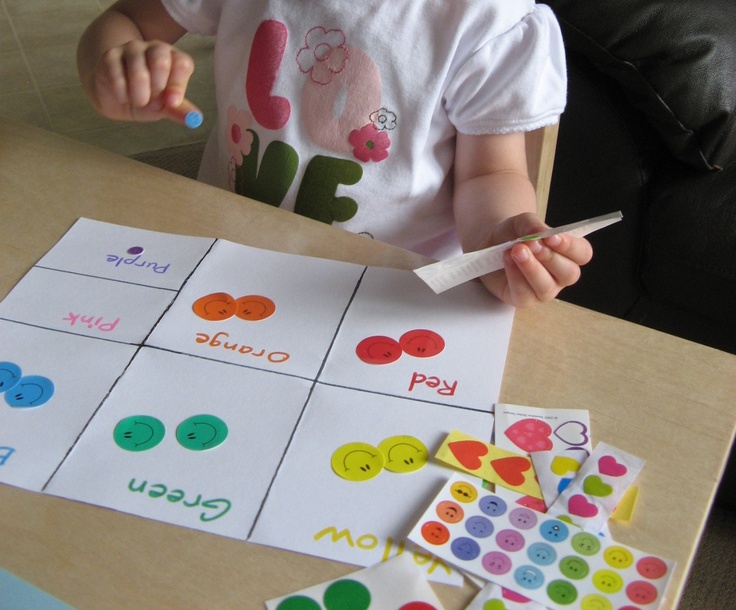 Now let's look at some of the most popular and simple color learning techniques.
Now let's look at some of the most popular and simple color learning techniques. Towel Game
For this game you will need colored cardboard and a little imagination. You need to make beautiful towels, but, in the middle, they should be white, and the edges should have some other color. Naturally, one towel has edges of only one color.
Now, cut out pieces of cardboard that can be placed in the middle of your towel, where the white void is now. Invite your child to match each towel with a different color to match the edges.
The second version of the same game is not to make other pieces of cardboard, but to invite the child to paint over the center with paints. But, the downside here is that then your towels become disposable.
Mosaic
Mosaic develops every child very much, and therefore, it must be collected frequently. There is another plus in it - it is multi-colored, and has bright, large details. Offer to collect it to the child, and help him with this.
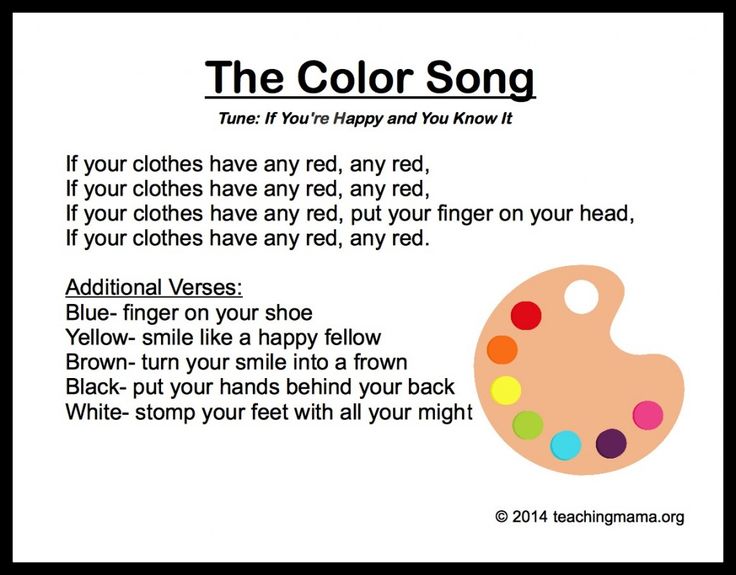 But, ask for details, naming them, for example: "Give me, please, a red detail."
But, ask for details, naming them, for example: "Give me, please, a red detail." Do not tell the child what it looks like, he should think for himself, and if he asks for help, then do not perform the operation instead of him. Just take any object of the same color and show what red looks like.
I repeat once again that we should not forget that we study colors together with the child, and therefore, we help in everything.
Balloons
The child always likes balloons, so they beckon children with something. You can use it for selfish purposes, for learning. Especially, they can help at the initial stage, when you are just learning the first colors with your child.
For example, you are learning the color yellow. Buy 5-10 yellow balloons, inflate them, and hang them around the room. Ask the child to bring a yellow balloon, he will not be mistaken, they are all yellow. This should take a few days, and then, you can add some other color, for example, red.
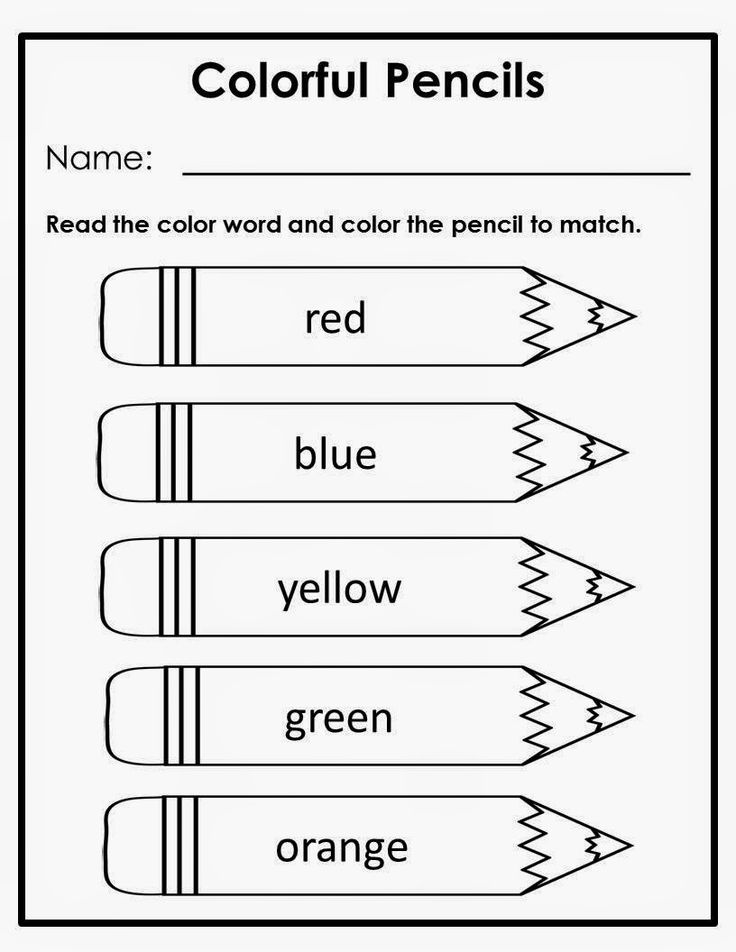 Now, you have yellow balls, and only one - red.
Now, you have yellow balls, and only one - red. Ask the child to bring exactly the red ball, and, most likely, he will do it without difficulty. Gradually add colors, and you will understand that it is fun, interesting, and most importantly, it is useful for development.
Animal House Game
You will have to work hard to create this game. Cut out some animals. You can draw them yourself, together with your child, you can print them out on a printer, it doesn't matter. Also, separately draw small houses with a simple pencil, they can also be made on a computer and printed. Now set a task for the child, to give each animal its own house.
It should be something like an animal, for example, a fox's house can be painted orange, a hare - gray, and so on. In addition, make a few more details: fence, doors, rug, and so on. Let the child paint them in the color of each house and match them. This game will be very interesting for the kid, and at the same time, he will develop and learn colors.
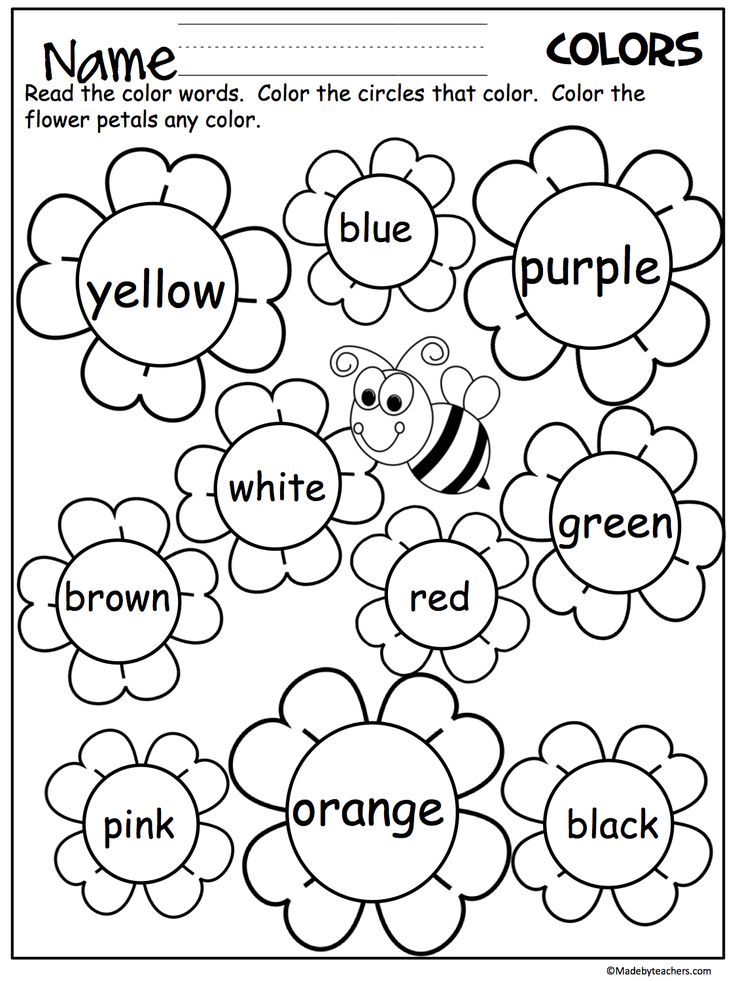
A few tips for learning about color
When you teach colors with your child, it must be interesting, first of all, to the kid. Therefore, take the trouble to provide everything you need, create the necessary material, games, and so on. Also try to draw more, because it is in the drawings that all colors are known.
It is not necessary to tell the child that he did something wrong, it is better to show why this or that color does not suit. After all, you should not study design graphics with him, your task is to give elementary knowledge of simple colors.
Shades of colors
If everything is clear with ordinary colors, then how to learn the shades of colors, is it much more difficult? Yes, it is, you will have to devote more time to teaching the baby, but the shades are as important as the primary colors, because the baby must understand the difference between blue and blue, between green and light green. Therefore, we will give some recommendations on how to learn the shades of colors.

First of all, get all the necessary equipment for the class, for example, a wider range of felt-tip pens and pencils, paints, and so on.
Use the same games that are suitable for learning ordinary colors, only now with more advanced features. It is also important to show the similarity of colors and their shades. For example, this can be done in the game "Animal Houses". Let the kid paint the house with one color, and the fence or doors with its shade, lighter or darker.
The most important task is to explain to your student how shades appear. Of course, for this you need to prepare yourself and learn about the combination of colors. Also, you will need paint, and then turn it all into a beautiful trick, showing the child how, by mixing one paint with another, get a third color that is completely different from the previous ones.
There are a lot of shades, therefore, it is not necessary to explain and tell all of them, it is enough to limit ourselves to the most common ones that may be useful to a child in the first grade.
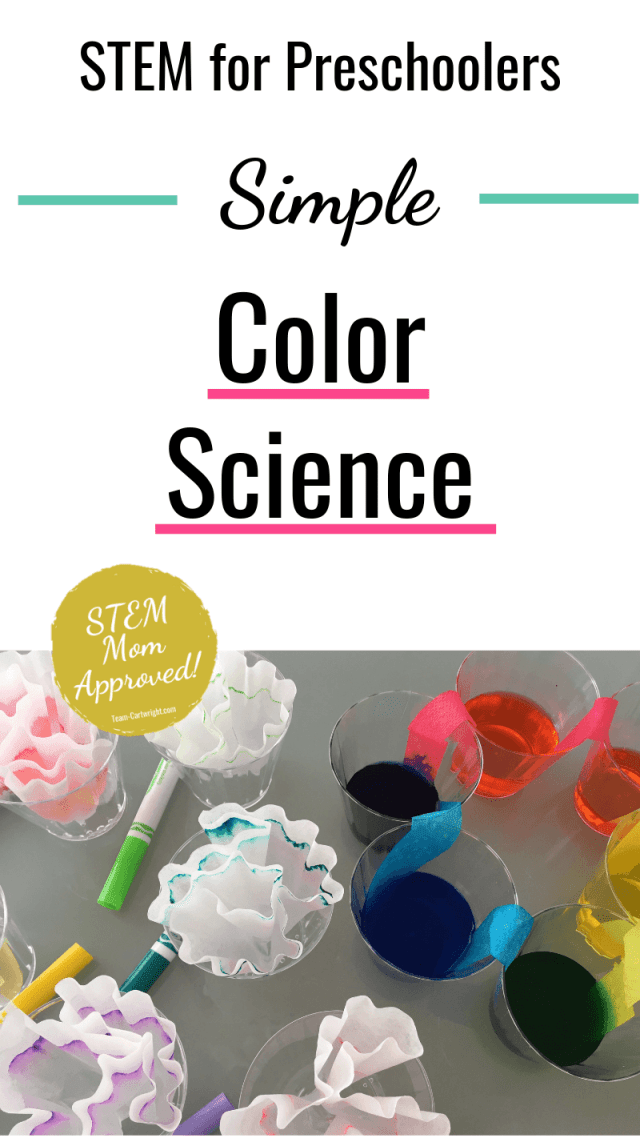 Some parents are so addicted that they tell designer shades of colors, of which there are more than a million.
Some parents are so addicted that they tell designer shades of colors, of which there are more than a million. Methodology for teaching a child the concept of color
As an example of other educational games for children, we offer one of the simple methods for teaching a child the concept of color.
Cut out 25 cards from paper, color them in the same way as shown in the pictures on our page, and arrange them one below the other and in ascending order of numbers - from the first to the twenty-fifth.
Training is desirable to start with red. Circles painted in this color are located in different places on the first 5 cards.
Take the cards of the first five. Ask your child to point to the red circle and he will complete your task confidently and without error on all five cards, since there is no other color there.
Take the next 5 cards, on which next to the red circle is a green circle that increases in size from card to card.

Learn more







